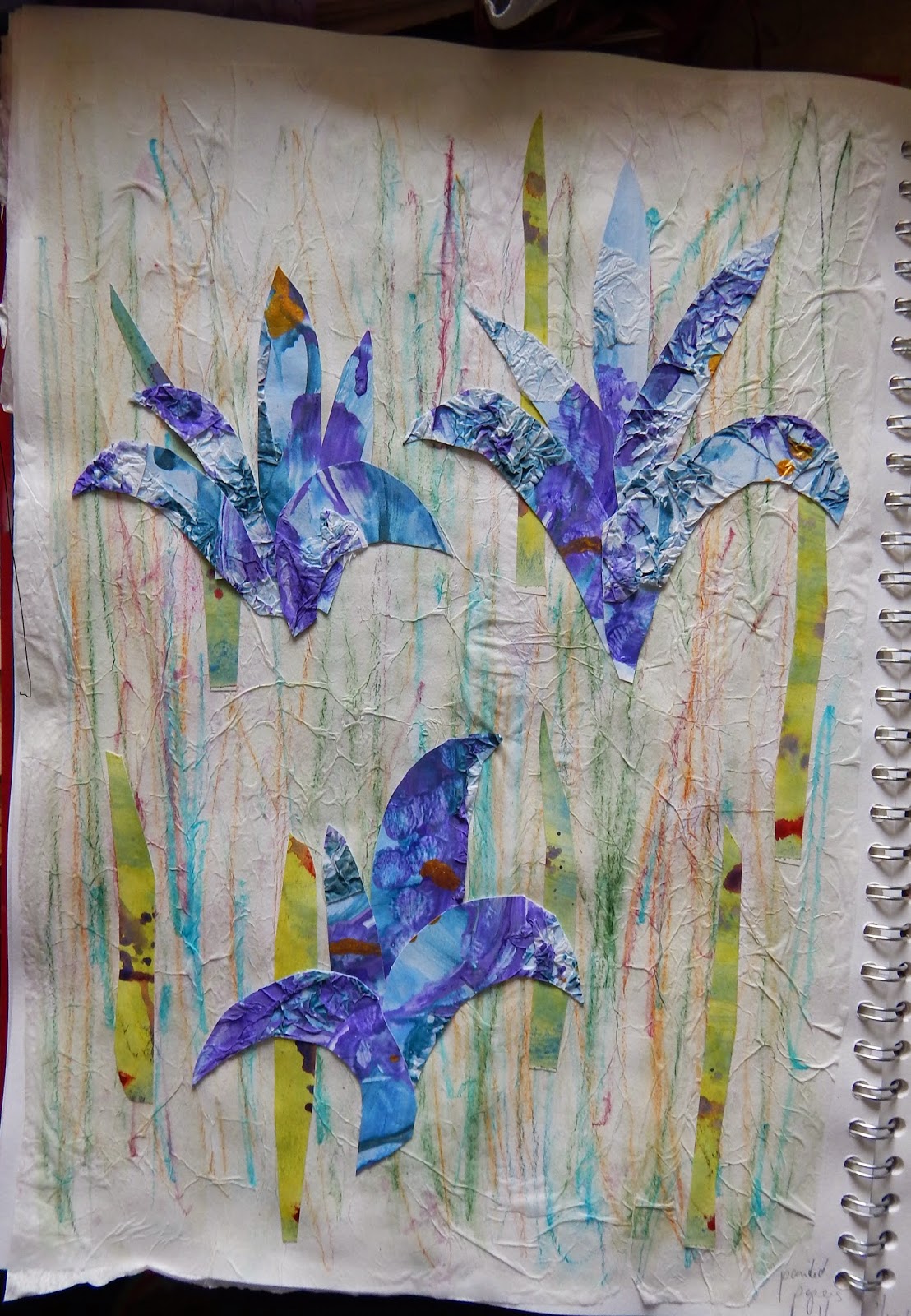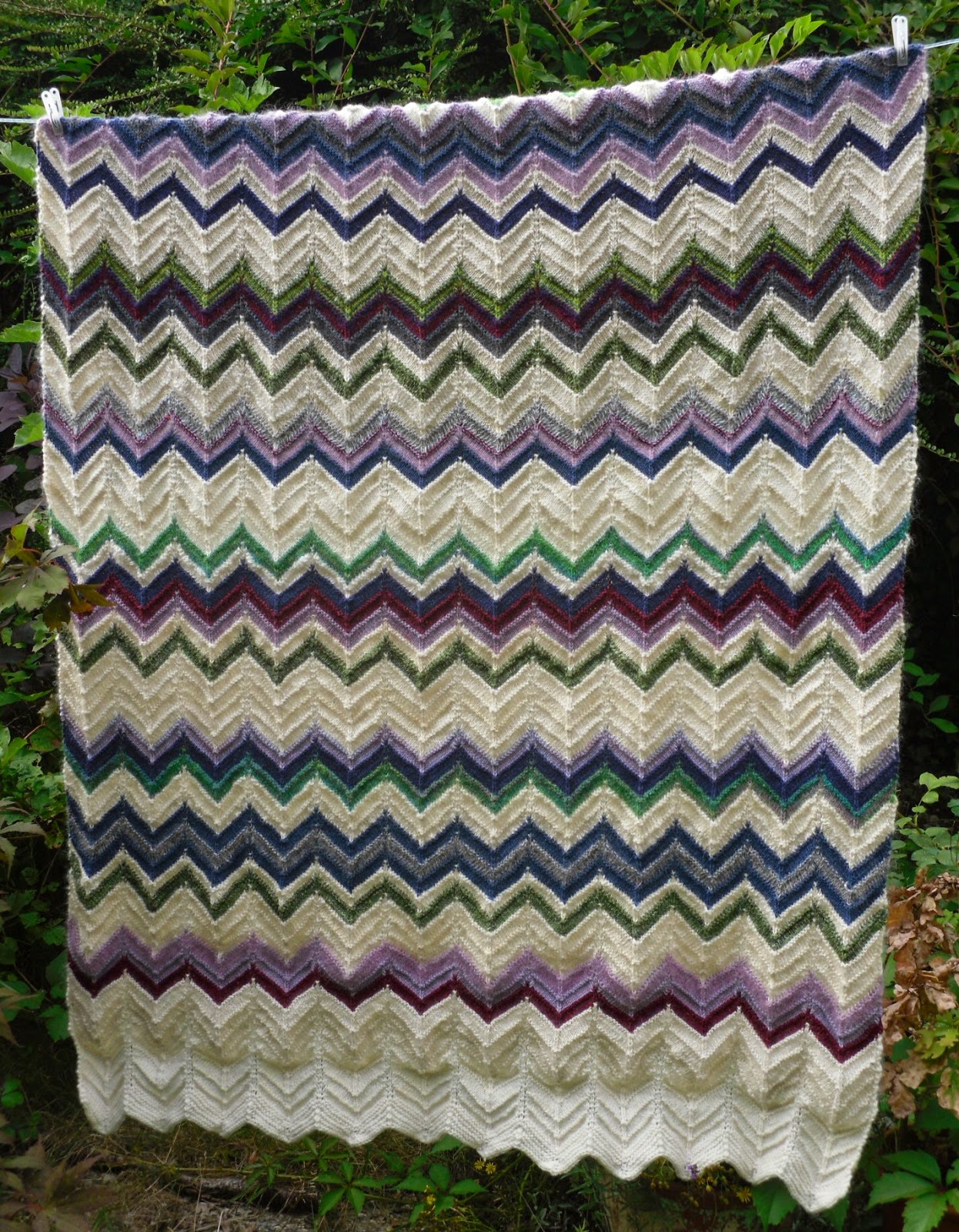Late July
I have been pondering how to finish off on a high with this assignment, having enjoyed the colour and design work, but struggled with the printed work. I have revisited Barbara Rae's work, as her landscapes are full of life, colour, energy, and I see her free improvised style as something that resonates with how I work as well. The book I used was Barbara Rae Sketchbooks, Royal Academy of Arts, 2011.
I went for a bit of a holiday to a place I feel strongly about and thought perhaps having Rae's work in mind whilst looking at the large skies over the sea where I was might inspire me.
I had also done just a few holiday sketches sitting on the beach, a couple at sunset, and one of the coastline.
So, having thought about this a while during my holiday abroad I decided to do a printed-painted landscape. I approached it a bit more systematically than I had the sampling sessions earlier in the project.
I thought perhaps it was better to think about layering various printed and painted mark making approaches, and started off by creating two bunches of small samples. The first one was using bleach to fade out painted areas.

This was useful, as it showed how different fabrics reacted differently to the discharge fluid (bleach) - some very well - the top two, which were respectively acetate and a poly-cotton, and less so the other two, below, a heavier grey cotton and a darkish green poly-cotton. The acetate bleaches almost instantly and the fluid runs quickly, so it is difficult to control the brush marks suing bleach on this fabric. A fifth piece was a wonderful piece of lining fabric I found in a charity shop (a small corner of it is showing to the right): a light-weight fabric in a good blue, made in Japan, which I thought perhaps might be silk, but it did not fade at all despite heavy application of bleach. So it is more likely to be a synthetic, but of a good quality. I had already decided I would probably use the acetate. It is has body somehow, whilst being a smooth and slightly precious looking fabric. It took print very well during early sampling, and despite being a pale green I think with prints in blue, white and blue-greens, and possibly a bit of brown, it will be a useful background for a seascape.
The second set of small samples were to test printing and painting on the same set of fabric types.
Here I liked the grey cotton, which was painted with blue and white mixed to varying degrees. Of course the sky would not be a summer sunny sky, but it looks good as a post-thunderstorm sort of sky. The pale green acetate still worked well, and the monoprint lay comfortably on all samples as they had smooth surfaces. I have not tried to print on top of the bleached samples and will just go for that for the final piece (I have a bit more of the acetate left if the print-on-faded-areas does not work as well as I am hoping. This is part of working experimentally, so it will just have to be tried, to see if it works.
In the end I printed three large samples, of which one was chosen as the final piece. First I bleached out areas on the fabric pieces for the two halves - one with waves the other cloudy:
The lower one shows how the bleach slipped off the brush and left the marks from the fluid - this would not matter too much as the print would be placed on top of this.
There were also two 'what was left on the pallet' prints, which I used to print the left-overs, ghosts, from the plates of the larger one. In printing first the sky, there was little to worry about with regard to registration with other printing, but when I came to print the 'sea' section it was much more difficult to hold the fabric to accurately place it on the plate. In one case there was a bit of overlap of the print, but this actually does not look too bad.
Once both the sea and sky sections had been printed covering the whole of the fabric, I fixed the fabric paint and left it a while as I needed to make the horizon distinct and needed to think about this a while. In the end I made a simple print on the horizon of two of the larger pieces, just using a strip of cardboard which I textured by scratching the surface.
Here's the final sample:
The final piece was then applied with waves in painted bonding material and embroidered waves of different sizes. The sky was left without stitching as the print was quite strong in itself, and I do not like to over-work the surface when it is not needed. Finally the piece was made stronger by ironing on Vilene and it was sewn onto a piece of blue cotton to bring out the blue in both the top and the bottom sections of the picture.
Hopefully this detail shows the bonded paint and the embroidery. Unfortunately photographic pictures distort colouring - I used greeny-blues and a bit of brown for the sea that was dark, but also gave it a warm feel, which is not so clear here, where the blue and brown dominate. The horizon line was a stamped section using distressed cardboard. This worked well, it created a clear line and with a little embroidery to indicate softer outlines of wooded land it evoked what I saw in the distance.
I also hope that the effect of the monoprint is visible - the plate is smooth, you roll out dye-paint, work in textures by scraping or some other way of mark making. When smoothing out the fabric over the print plate the dye may be pulled a bit, and that adds to the effect sometimes. This makes the printed marks very complex and in this case was useful as waves may at times be even but in the sea there is so many effects from currents, different depths of water that the surface is rippled and light fractures in different directions.
As a sample this final thing is reasonable, it does not claim to be a finished piece and was a useful exercise for showing how printing-painting can work with the substance of the fabric surface.
What was left on the print plate?
Three sections of sky 'ghost' prints were printed on top of each other. I then added a bit of painted sea and printed a coast line using distressed card.
The other was a sample with three levels of 'ghost' prints of the sea sections:
Both these samples will be used for further work at some point, not yet sure what for though.












































